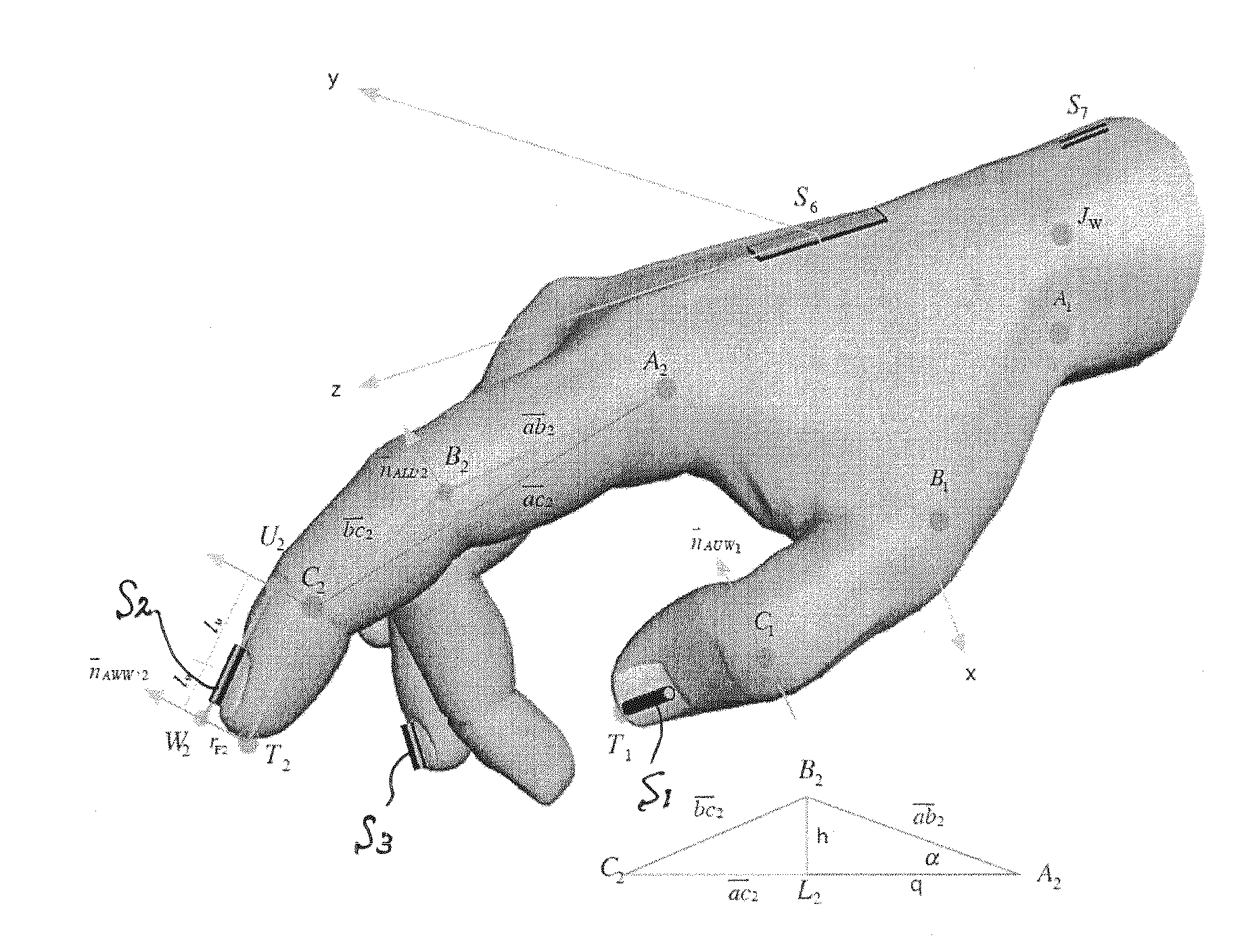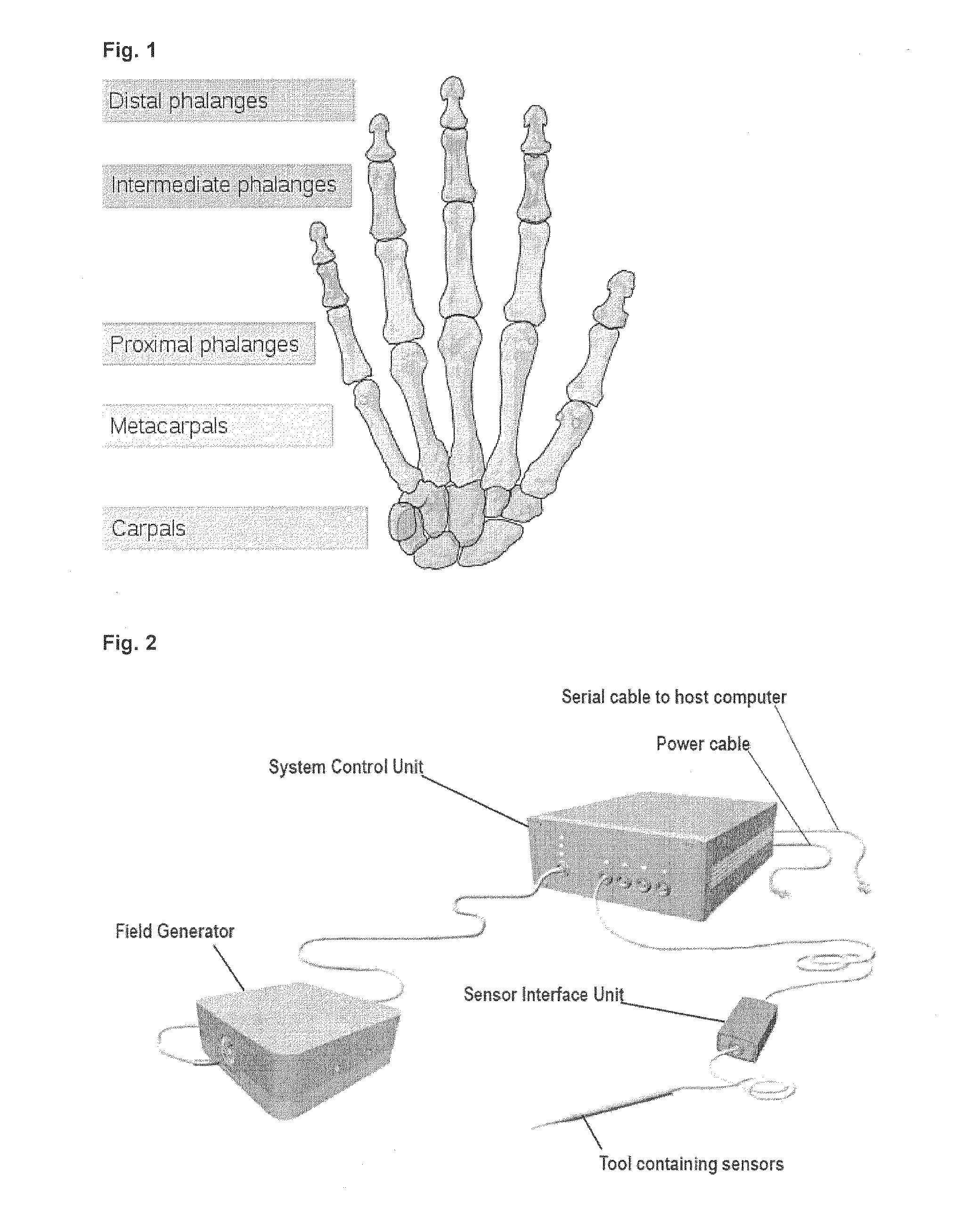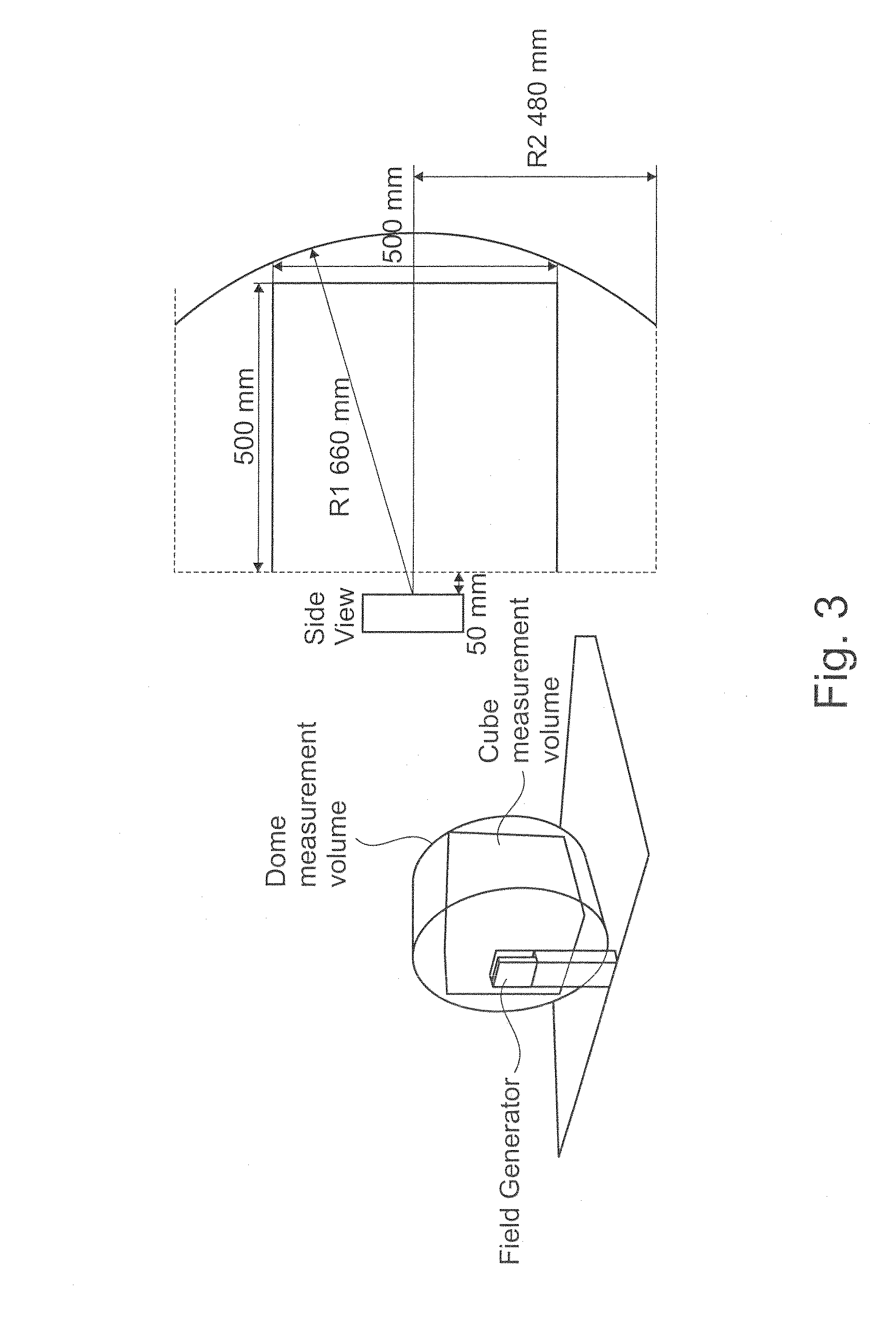Modelling of hand and arm position and orientation
a technology of applied in the field of primate hand and arm position and orientation modelling, can solve the problem of high complexity of finger movemen
- Summary
- Abstract
- Description
- Claims
- Application Information
AI Technical Summary
Benefits of technology
Problems solved by technology
Method used
Image
Examples
first embodiment
Configuration
[0027]Referring to FIG. 2, the modelling system of the present embodiment includes a tool having a plurality of sensors to be attached to the finger and a separate modelling device, and uses an electro-magnetic principle to track hand and finger movements. In other words, the sensors to be placed on the fingers are sensor coils to which a varying magnetic field is applied and a resultant voltage is outputted to the modelling device.
[0028]As one example of such a modelling system a Aurora measurement system developed by Northern Digital Inc., Waterloo, Canada may be used. The measurement system may have a sampling rate of 40 Hz per sensor. A serial interface (Recommended Standard 232) may be used to transfer data from the system to a host computer with a maximum data rate of 115 kBaud.
[0029]The modelling system includes a field generator, a system control unit (SCU), sensor coils and a host computer (not shown), and may further include a sensor interface unit (SIU). The ...
second embodiment
[0065]Next, a second embodiment of the present invention is explained. A modelling system according to the present embodiment includes a glove with sensors, instead of separate sensors to be attached to the hand.
[0066]Specifically, the glove has a first sensor on a portion of each glove finger corresponding to a phalanx distalis of a finger, and a second sensor at a position that is fixed on a portion (which may preferably be located at a non-visible place inside the glove) of the glove finger corresponding to a dorsum or palm of the hand. The first and second sensors are identical to those in the first embodiment. In one example, the first sensor is provided on a glove portion corresponding to the fingernail.
[0067]The hardware configuration is similar to that of the first embodiment shown in FIG. 2.
[0068]However, in the second embodiment, there is provided a storage (for example in the host computer) for storing a first distance between a point of the dorsum (the second sensor prov...
third embodiment
Arm-Modelling
[0072]Referring to FIG. 11, a third embodiment of the present invention is explained. In the third embodiment, in addition to the hand-modelling an arm-modelling takes place. Namely, the positions and orientations of a shoulder joint Js, an elbow joint Je and a wrist joint Jw will be determined. These joints are assumed to be on the same plane. Also, the elbow joints Je and wrist joints Jw are preferably on a rotation axis of the forearm.
[0073]As explained below, an additional sensor (sensor coil) S7 to be placed on a forearm is needed to calculate positions and orientations of the entire arm. The axis of the sensor coil is placed along a longitudinal direction of the forearm.
[0074]A calculation method to be performed by the host computer (FIG. 2) will now be explained.
[0075]Assuming the shoulder position to be constant (e.g. the user sits on a chair), the position of the shoulder joint Js is determined. The length of the forearm is measured before the arm modelling.
[00...
PUM
 Login to View More
Login to View More Abstract
Description
Claims
Application Information
 Login to View More
Login to View More - R&D
- Intellectual Property
- Life Sciences
- Materials
- Tech Scout
- Unparalleled Data Quality
- Higher Quality Content
- 60% Fewer Hallucinations
Browse by: Latest US Patents, China's latest patents, Technical Efficacy Thesaurus, Application Domain, Technology Topic, Popular Technical Reports.
© 2025 PatSnap. All rights reserved.Legal|Privacy policy|Modern Slavery Act Transparency Statement|Sitemap|About US| Contact US: help@patsnap.com



